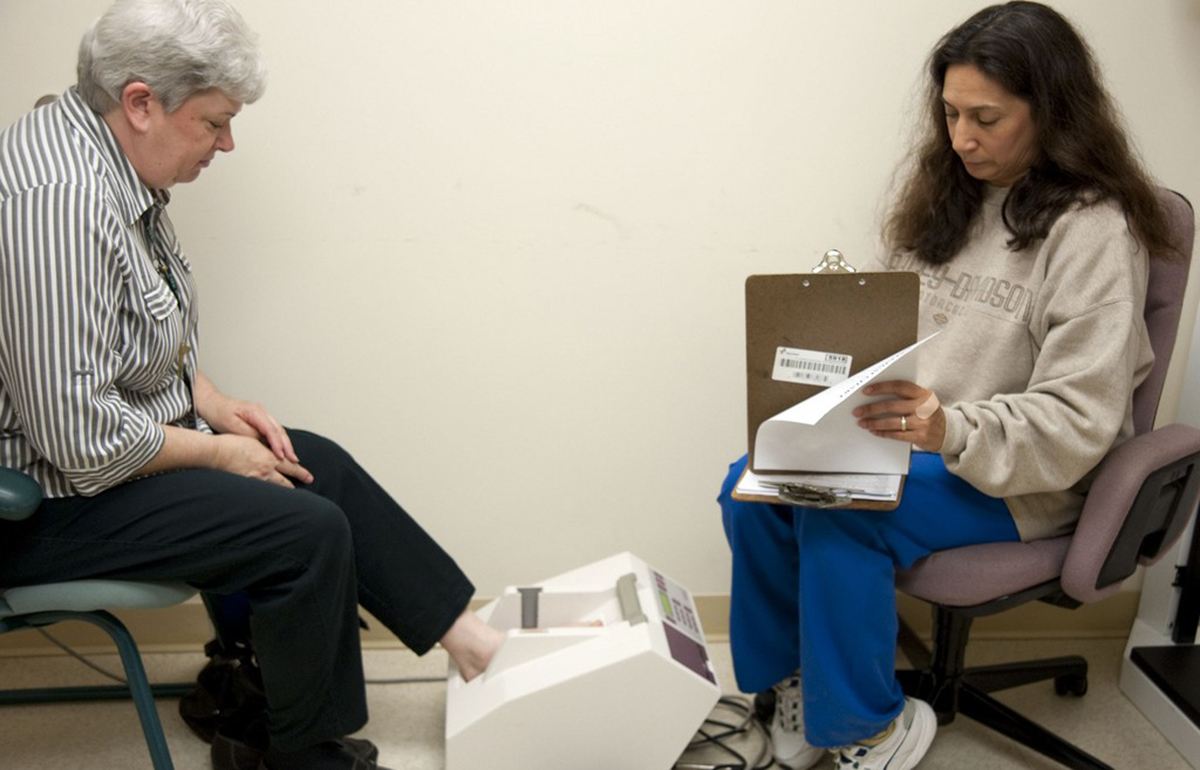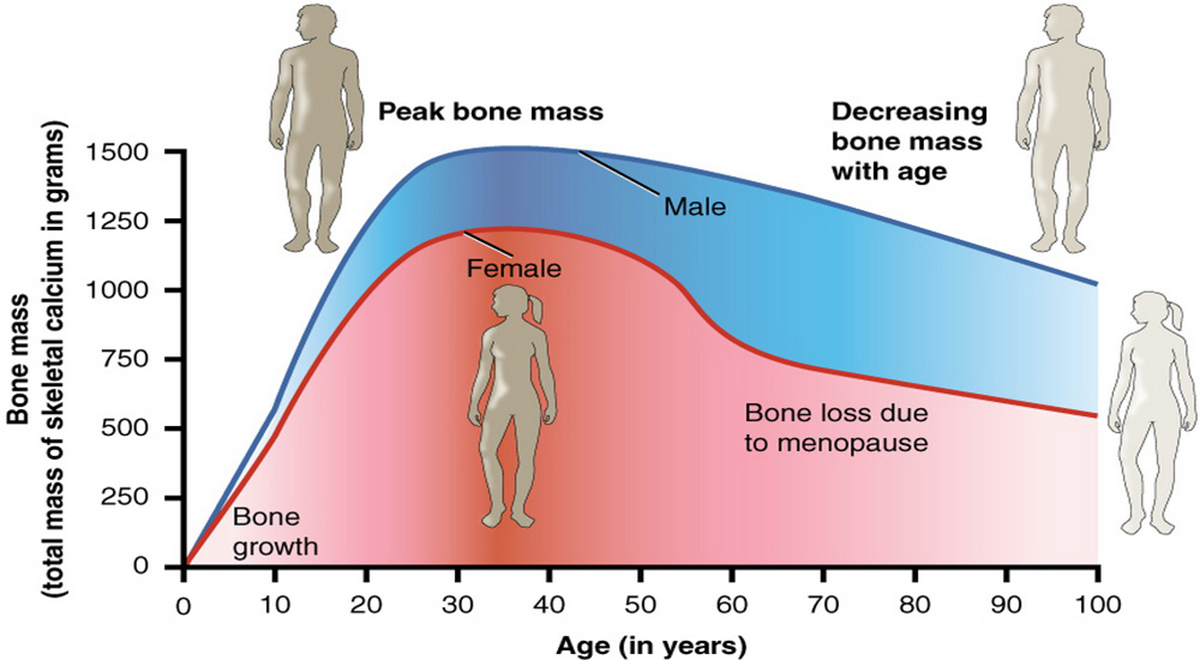What causes osteoporosis?
Although currently there is no cure or reversal for osteoporosis, there are a number of ways it can be prevented and treated. Many people each year receive the startling diagnosis of osteoporosis and the condition is most common in women who are of post-menopausal age. Other risk factors which increase osteoporosis include those with the condition present in their family and people with a small build.

The most common places a person will experience an osteoporosis related bone fracture include the hip, wrist, or spine, but it can happen in any bone of the body.
Osteoporosis is a disease in which the human bones become fragile and more likely to break. Usually, the bone will lose density, which is a measure of the amount of minerals and calcium in the bone. Bone is a living tissue and it is constantly being replaced by new bone. However, osteoporosis happens when the body does not produce enough new bone and when existing bone is reabsorbed by the body. Calcium is one of the most important minerals needed for helping healthy bones to form and if someone does not receive enough calcium and vitamin D, the bones may become brittle and more prone to breakage.
Women who have gone through menopause will experience a drop in estrogen and it can lead to bone loss. Other causes of bone loss can include:
- Low body weight
- Certain medical conditions
- Drinking large amounts of alcohol
- Being bed ridden
- Taking certain medications
- A family history of osteoporosis
- Absence of menstrual period in women for long periods of time
- Smoking
There are no symptoms of early onset osteoporosis and many times a person will have to experience a bone fracture before being diagnosed with the disease. Pain from bone fractures can occur suddenly or slowly over time and may be an indication of osteoporosis. If a person experiences a loss of height over time and has a stopped posture, it can also be prevalent in those with osteoporosis.
How is osteoporosis treated?
While osteoporosis cannot be reserved, there are ways it can be treated. The main goal for someone diagnosed with osteoporosis is to prevent fractures from occurring. There are several medications which can be useful in treating osteoporosis and these include the following; estrogen, bisphosphonates, parathyroid hormone, estrogen therapy, hormone therapy and a recently FDA approved RANK ligand inhibitor.
See Also: World Osteoporosis Day: Time To Remember Your Bone Health
In addition to the medications available for treating osteoporosis, there are a number of lifestyle modifications one can make to help as well. Eating a diet rich in calcium and vitamin D, exercising, monitoring sodium intake and maintaining an adequate dietary intake of protein are all ways in which a person can strengthen their body and help reduce osteoporosis related bone fractures.
What good can treating osteoporosis do?
First of all, leaving osteoporosis untreated is a recipe for pain, misery and untold damage to one’s body. Depending on the state of a person’s bones, through lifestyle changes, dietary modifications and osteoporosis drugs, someone might be able to build some bone and get out of the osteoporosis range. Through the use of medications, bone loss can be slowed down, but not reversed. Some types of osteoporosis drugs slow the breakdown of bones, while others can spur new bone growth.

The quality of new bone built up from diet, exercise and osteoporosis drugs is thought to be quite good. However, it is important to note the quality of a person’s bones will never go back to normal. No matter what kind of osteoporosis medication your physician chooses for you, it is important to know as much as possible about how the disease will affect you and change your life.
However, it is important to note once the bones of the spine have collapsed it is not a condition which can be reversed. Osteoporosis may cause a person to become disabled from having weakened bones. Through treating osteoporosis with medication and lifestyle modifications, it can lead to reduced bone loss and improve an individual’s quality of life.
Why is it important to find an osteoporosis specialist?
If you have been told you are at risk for developing osteoporosis or have recently been diagnosed, it is important to find a healthcare provider who has experience with the disease. While there are no particular physicians who specialize in treating osteoporosis, many healthcare practitioners are qualified to diagnose and treat the disease. Some physicians with experience in preventing, diagnosing and treating osteoporosis include the following; rheumatologists, internal medical physicians, orthopedists, endocrinologists, geriatricians, physiatrists, and general practitioners.
If you do not currently have a healthcare provider or your doctor is not able to help you, you should contact your nearest hospital and speak to the physician’s referral line or request to speak with the department that has information about osteoporosis. Some hospitals have a separate osteoporosis program or women’s health clinic that can be helpful.
There are many ways osteoporosis can affect someone’s quality of life. You may be diagnosed with osteoporosis, but it important to remember it is beatable and treatable. Focus on your strengths and remember to pay attention to your physical and emotional well-being.
See Also: Natural Treatment For Osteoporosis
Managing osteoporosis and finding the proper treatment options may not always prove to be easy. However, by taking a proactive and positive approach in the treatment of your osteoporosis, by using all of your resources and educating yourself about the disease it becomes possible to manage the condition and handle the side effects. Living with osteoporosis does not have to diminish your quality of life in any way, on the contrary when you understand what you are dealing with it helps you to improve your outlook and prognosis.
- Photo courtesy of NASA Goddard Space Flight Center by Flickr : www.flickr.com/photos/nasa_goddard/5657511563
- Photo courtesy of CFCF by Wikimedia Commons : en.wikipedia.org/wiki/Osteoporosis#mediaviewer/File:615_Age_and_Bone_Mass.jpg


Your thoughts on this